SG3524N IC REG CTRLR MULT TOPOLOGY 16DIP: Datasheet, Circuit, Pinout and Equivalents
16 Terminals 8V~40V 16-Pin SG3524 DC to DC converter IC SWITCHING CONTROLLER 2 Outputs Transistor Driver









16 Terminals 8V~40V 16-Pin SG3524 DC to DC converter IC SWITCHING CONTROLLER 2 Outputs Transistor Driver
The SG3524N was designed for switching regulators of either polarity, transformer-coupled dc-to-dc converters, transformerless voltage doublers, and polarity converter applications employing fixed-frequency, pulse-width modulation techniques. This article is going to introduce pinout, applications, features, and more details about SG3524N.

SG3524n | How To Make Inverter Using SG3524 Ic | 1000 Watt Inverter | 3205 Mosfet |
- Overview of SG3524N
- SG3524N Features
- SG3524N Pinout
- SG3524N Block Diagram
- SG3524N Circuit
- SG3524N 3D Model
- Specifications
- Principle of operation
- Where to use the SG3524N PWM Controller IC
- How to use SG3524N
- SG3524N Equivalents
- Applications of SG3524N
- SG3524N Package informtion
- SG3524N Manufacturer
- Datasheet PDF
- Popularity by Region
- Parts with Similar Specs
Overview of SG3524N
The SG3524N incorporates on a single monolithic chip all the functions required for the construction of regulating power supplies inverters or switching regulators. They can also be used as the control element for high power-output applications.
The SG3524N was designed for switching regulators of either polarity, transformer-coupled dc-to-dc converters, transformerless voltage doublers, and polarity converter applications employing fixed-frequency, pulse-width modulation techniques. The dual alternating outputs allow either single-ended or push-pull applications.
Each device includes an on-chip reference, error amplifier, programmable oscillator, pulse-steering flip flop, two uncommitted output transistors, a high-gain comparator, and current-limiting and shut-down circuitry.
SG3524N Features
Supply Voltage: 8V to 40V
Output Voltage: 4.6 V to 5.4 V
Output Current: 50 mA
Number of Outputs: 2 Output
Topology: Boost, Buck, Fly-back, Forward, Push-Pull
Switching Frequency: 722 kHz
Duty Cycle - Max: 45 %
Fall Time: 100 ns
Rise Time: 200 ns
Available in 16-pin PDIP, PDSO, and SOIC Packages
SG3524N Application
Transformer-coupled DC/DC converters
Switching regulators of any polarity
SG3524N Pinout

SG3524N Pinout
SG3524N Block Diagram
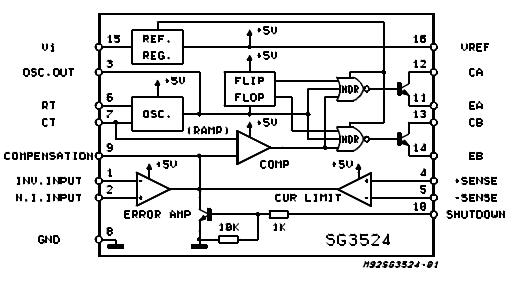
SG3524N Block Diagram
SG3524N Circuit

SG3524N Circuit
SG3524N 3D Model
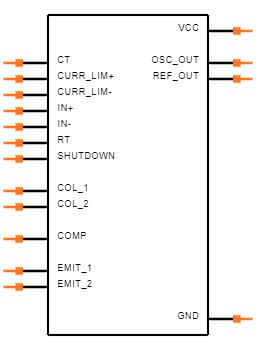
SG3524N Symbol
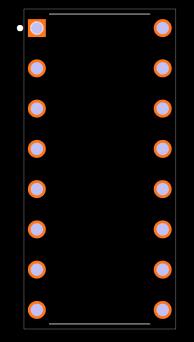
SG3524N Footprint

SG3524N 3D Model
Specifications
- TypeParameter
- Factory Lead Time10 Weeks
- Mount
In electronic components, the term "Mount" typically refers to the method or process of physically attaching or fixing a component onto a circuit board or other electronic device. This can involve soldering, adhesive bonding, or other techniques to secure the component in place. The mounting process is crucial for ensuring proper electrical connections and mechanical stability within the electronic system. Different components may have specific mounting requirements based on their size, shape, and function, and manufacturers provide guidelines for proper mounting procedures to ensure optimal performance and reliability of the electronic device.
Surface Mount, Through Hole - Mounting Type
The "Mounting Type" in electronic components refers to the method used to attach or connect a component to a circuit board or other substrate, such as through-hole, surface-mount, or panel mount.
Through Hole - Package / Case
refers to the protective housing that encases an electronic component, providing mechanical support, electrical connections, and thermal management.
16-DIP (0.300, 7.62mm) - Number of Pins16
- Weight1.627801g
- Operating Temperature
The operating temperature is the range of ambient temperature within which a power supply, or any other electrical equipment, operate in. This ranges from a minimum operating temperature, to a peak or maximum operating temperature, outside which, the power supply may fail.
0°C~70°C TA - Packaging
Semiconductor package is a carrier / shell used to contain and cover one or more semiconductor components or integrated circuits. The material of the shell can be metal, plastic, glass or ceramic.
Tube - Tolerance
In electronic components, "tolerance" refers to the acceptable deviation or variation from the specified or ideal value of a particular parameter, such as resistance, capacitance, or voltage. It indicates the range within which the actual value of the component can fluctuate while still being considered acceptable for use in a circuit. Tolerance is typically expressed as a percentage or a specific value and is important for ensuring the accuracy and reliability of electronic devices. Components with tighter tolerances are more precise but may also be more expensive. It is crucial to consider tolerance when selecting components to ensure proper functionality and performance of the circuit.
8% - JESD-609 Code
The "JESD-609 Code" in electronic components refers to a standardized marking code that indicates the lead-free solder composition and finish of electronic components for compliance with environmental regulations.
e4 - Part Status
Parts can have many statuses as they progress through the configuration, analysis, review, and approval stages.
Active - Moisture Sensitivity Level (MSL)
Moisture Sensitivity Level (MSL) is a standardized rating that indicates the susceptibility of electronic components, particularly semiconductors, to moisture-induced damage during storage and the soldering process, defining the allowable exposure time to ambient conditions before they require special handling or baking to prevent failures
1 (Unlimited) - Number of Terminations16
- ECCN Code
An ECCN (Export Control Classification Number) is an alphanumeric code used by the U.S. Bureau of Industry and Security to identify and categorize electronic components and other dual-use items that may require an export license based on their technical characteristics and potential for military use.
EAR99 - Terminal Finish
Terminal Finish refers to the surface treatment applied to the terminals or leads of electronic components to enhance their performance and longevity. It can improve solderability, corrosion resistance, and overall reliability of the connection in electronic assemblies. Common finishes include nickel, gold, and tin, each possessing distinct properties suitable for various applications. The choice of terminal finish can significantly impact the durability and effectiveness of electronic devices.
Nickel/Palladium/Gold (Ni/Pd/Au) - Terminal Position
In electronic components, the term "Terminal Position" refers to the physical location of the connection points on the component where external electrical connections can be made. These connection points, known as terminals, are typically used to attach wires, leads, or other components to the main body of the electronic component. The terminal position is important for ensuring proper connectivity and functionality of the component within a circuit. It is often specified in technical datasheets or component specifications to help designers and engineers understand how to properly integrate the component into their circuit designs.
DUAL - Peak Reflow Temperature (Cel)
Peak Reflow Temperature (Cel) is a parameter that specifies the maximum temperature at which an electronic component can be exposed during the reflow soldering process. Reflow soldering is a common method used to attach electronic components to a circuit board. The Peak Reflow Temperature is crucial because it ensures that the component is not damaged or degraded during the soldering process. Exceeding the specified Peak Reflow Temperature can lead to issues such as component failure, reduced performance, or even permanent damage to the component. It is important for manufacturers and assemblers to adhere to the recommended Peak Reflow Temperature to ensure the reliability and functionality of the electronic components.
235 - Frequency
In electronic components, the parameter "Frequency" refers to the rate at which a signal oscillates or cycles within a given period of time. It is typically measured in Hertz (Hz) and represents how many times a signal completes a full cycle in one second. Frequency is a crucial aspect in electronic components as it determines the behavior and performance of various devices such as oscillators, filters, and communication systems. Understanding the frequency characteristics of components is essential for designing and analyzing electronic circuits to ensure proper functionality and compatibility with other components in a system.
300kHz - Time@Peak Reflow Temperature-Max (s)
Time@Peak Reflow Temperature-Max (s) refers to the maximum duration that an electronic component can be exposed to the peak reflow temperature during the soldering process, which is crucial for ensuring reliable solder joint formation without damaging the component.
20 - Base Part Number
The "Base Part Number" (BPN) in electronic components serves a similar purpose to the "Base Product Number." It refers to the primary identifier for a component that captures the essential characteristics shared by a group of similar components. The BPN provides a fundamental way to reference a family or series of components without specifying all the variations and specific details.
SG3524 - Function
The parameter "Function" in electronic components refers to the specific role or purpose that the component serves within an electronic circuit. It defines how the component interacts with other elements, influences the flow of electrical signals, and contributes to the overall behavior of the system. Functions can include amplification, signal processing, switching, filtering, and energy storage, among others. Understanding the function of each component is essential for designing effective and efficient electronic systems.
Step-Up/Step-Down - Number of Outputs2
- Output Voltage
Output voltage is a crucial parameter in electronic components that refers to the voltage level produced by the component as a result of its operation. It represents the electrical potential difference between the output terminal of the component and a reference point, typically ground. The output voltage is a key factor in determining the performance and functionality of the component, as it dictates the level of voltage that will be delivered to the connected circuit or load. It is often specified in datasheets and technical specifications to ensure compatibility and proper functioning within a given system.
40V - Output Type
The "Output Type" parameter in electronic components refers to the type of signal or data that is produced by the component as an output. This parameter specifies the nature of the output signal, such as analog or digital, and can also include details about the voltage levels, current levels, frequency, and other characteristics of the output signal. Understanding the output type of a component is crucial for ensuring compatibility with other components in a circuit or system, as well as for determining how the output signal can be utilized or processed further. In summary, the output type parameter provides essential information about the nature of the signal that is generated by the electronic component as its output.
Transistor Driver - Input Voltage-Nom
Input Voltage-Nom refers to the nominal or rated input voltage that an electronic component or device is designed to operate within. This parameter specifies the voltage level at which the component is expected to function optimally and safely. It is important to ensure that the actual input voltage supplied to the component does not exceed this nominal value to prevent damage or malfunction. Manufacturers provide this specification to guide users in selecting the appropriate power supply or input voltage source for the component. It is a critical parameter to consider when designing or using electronic circuits to ensure reliable performance and longevity of the component.
20V - Analog IC - Other Type
Analog IC - Other Type is a parameter used to categorize electronic components that are integrated circuits (ICs) designed for analog signal processing but do not fall into more specific subcategories such as amplifiers, comparators, or voltage regulators. These ICs may include specialized analog functions such as analog-to-digital converters (ADCs), digital-to-analog converters (DACs), voltage references, or signal conditioning circuits. They are typically used in various applications where precise analog signal processing is required, such as in audio equipment, instrumentation, communication systems, and industrial control systems. Manufacturers provide detailed specifications for these components to help engineers select the most suitable IC for their specific design requirements.
SWITCHING CONTROLLER - Output Configuration
Output Configuration in electronic components refers to the arrangement or setup of the output pins or terminals of a device. It defines how the output signals are structured and how they interact with external circuits or devices. The output configuration can determine the functionality and compatibility of the component in a circuit design. Common types of output configurations include single-ended, differential, open-drain, and push-pull configurations, each serving different purposes and applications in electronic systems. Understanding the output configuration of a component is crucial for proper integration and operation within a circuit.
Positive - Power Dissipation
the process by which an electronic or electrical device produces heat (energy loss or waste) as an undesirable derivative of its primary action.
1W - Output Current
The rated output current is the maximum load current that a power supply can provide at a specified ambient temperature. A power supply can never provide more current that it's rated output current unless there is a fault, such as short circuit at the load.
100mA - Voltage - Supply (Vcc/Vdd)
Voltage - Supply (Vcc/Vdd) is a key parameter in electronic components that specifies the voltage level required for the proper operation of the device. It represents the power supply voltage that needs to be provided to the component for it to function correctly. This parameter is crucial as supplying the component with the correct voltage ensures that it operates within its specified limits and performance characteristics. It is typically expressed in volts (V) and is an essential consideration when designing and using electronic circuits to prevent damage and ensure reliable operation.
8V~40V - Max Supply Current
Max Supply Current refers to the maximum amount of electrical current that a component can draw from its power supply under normal operating conditions. It is a critical parameter that ensures the component operates reliably without exceeding its thermal limits or damaging internal circuitry. Exceeding this current can lead to overheating, performance degradation, or failure of the component. Understanding this parameter is essential for designing circuits that provide adequate power while avoiding overload situations.
8mA - Quiescent Current
The quiescent current is defined as the current level in the amplifier when it is producing an output of zero.
8mA - Control Features
Control features in electronic components refer to specific functionalities or characteristics that allow users to manage and regulate the operation of the component. These features are designed to provide users with control over various aspects of the component's performance, such as adjusting settings, monitoring parameters, or enabling specific modes of operation. Control features can include options for input/output configurations, power management, communication protocols, and other settings that help users customize and optimize the component's behavior according to their requirements. Overall, control features play a crucial role in enhancing the flexibility, usability, and performance of electronic components in various applications.
Enable - Topology
In the context of electronic components, "topology" refers to the arrangement or configuration of the components within a circuit or system. It defines how the components are connected to each other and how signals flow between them. The choice of topology can significantly impact the performance, efficiency, and functionality of the electronic system. Common topologies include series, parallel, star, mesh, and hybrid configurations, each with its own advantages and limitations. Designers carefully select the appropriate topology based on the specific requirements of the circuit to achieve the desired performance and functionality.
Flyback, Push-Pull - Control Mode
In electronic components, "Control Mode" refers to the method or mode of operation used to regulate or control the behavior of the component. This parameter determines how the component responds to input signals or commands to achieve the desired output. The control mode can vary depending on the specific component and its intended function, such as voltage regulation, current limiting, or frequency modulation. Understanding the control mode of an electronic component is crucial for proper integration and operation within a circuit or system.
VOLTAGE-MODE - Control Technique
In electronic components, "Control Technique" refers to the method or approach used to regulate and manage the operation of the component. This parameter is crucial in determining how the component functions within a circuit or system. Different control techniques can include analog control, digital control, pulse-width modulation (PWM), and various feedback mechanisms. The choice of control technique can impact the performance, efficiency, and overall functionality of the electronic component. It is important to select the appropriate control technique based on the specific requirements and characteristics of the application in which the component will be used.
PULSE WIDTH MODULATION - Reference Voltage
A voltage reference is an electronic device that ideally produces a fixed (constant) voltage irrespective of the loading on the device, power supply variations, temperature changes, and the passage of time. Voltage references are used in power supplies, analog-to-digital converters, digital-to-analog converters, and other measurement and control systems. Voltage references vary widely in performance; a regulator for a computer power supply may only hold its value to within a few percent of the nominal value, whereas laboratory voltage standards have precisions and stability measured in parts per million.
5V - Rise Time
In electronics, when describing a voltage or current step function, rise time is the time taken by a signal to change from a specified low value to a specified high value.
200ns - Synchronous Rectifier
Synchronous rectification is a technique for improving the efficiency of rectification by replacing diodes with actively controlled switches, usually power MOSFETs or power bipolar junction transistors (BJT).
No - Fall Time (Typ)
Fall Time (Typ) is a parameter used to describe the time it takes for a signal to transition from a high level to a low level in an electronic component, such as a transistor or an integrated circuit. It is typically measured in nanoseconds or microseconds and is an important characteristic that affects the performance of the component in digital circuits. A shorter fall time indicates faster switching speeds and can result in improved overall circuit performance, such as reduced power consumption and increased data transmission rates. Designers often consider the fall time specification when selecting components for their circuits to ensure proper functionality and efficiency.
100 ns - Nominal Input Voltage
The actual voltage at which a circuit operates can vary from the nominal voltage within a range that permits satisfactory operation of equipment. The word “nominal” means “named”.
40V - Max Duty Cycle
Max Duty Cycle refers to the maximum percentage of time that an electronic component, such as a switch or a power supply, can be in an "on" state during a defined time period. It is an important parameter in pulse-width modulated (PWM) systems and helps determine how often a device can operate without overheating or sustaining damage. By specifying the maximum duty cycle, manufacturers provide guidance on the safe operational limits of the component, ensuring reliability and efficiency in various applications.
45 % - Duty Cycle (Max)
The "Duty Cycle (Max)" parameter in electronic components refers to the maximum percentage of time that a signal is active or on within a specific period. It is commonly used in components such as pulse-width modulation (PWM) controllers, oscillators, and timers. A duty cycle of 100% means the signal is always on, while a duty cycle of 0% means the signal is always off. Understanding the maximum duty cycle is important for ensuring proper operation and performance of the electronic component within its specified limits. It is typically expressed as a percentage and helps determine the amount of power or energy being delivered by the signal.
45% - Output Phases
Output Phases in electronic components refer to the number of distinct output signals or waveforms that the component can generate. This parameter is commonly associated with devices such as power inverters, motor drives, and signal generators. The output phases indicate how many separate signals can be produced simultaneously by the component, with each phase typically representing a different electrical waveform or signal. Understanding the output phases of an electronic component is important for designing and implementing systems that require multiple output signals or for ensuring compatibility with other components in a circuit.
1 - Height5.1mm
- Length20mm
- Width7.1mm
- REACH SVHC
The parameter "REACH SVHC" in electronic components refers to the compliance with the Registration, Evaluation, Authorization, and Restriction of Chemicals (REACH) regulation regarding Substances of Very High Concern (SVHC). SVHCs are substances that may have serious effects on human health or the environment, and their use is regulated under REACH to ensure their safe handling and minimize their impact.Manufacturers of electronic components need to declare if their products contain any SVHCs above a certain threshold concentration and provide information on the safe use of these substances. This information allows customers to make informed decisions about the potential risks associated with using the components and take appropriate measures to mitigate any hazards.Ensuring compliance with REACH SVHC requirements is essential for electronics manufacturers to meet regulatory standards, protect human health and the environment, and maintain transparency in their supply chain. It also demonstrates a commitment to sustainability and responsible manufacturing practices in the electronics industry.
No SVHC - RoHS Status
RoHS means “Restriction of Certain Hazardous Substances” in the “Hazardous Substances Directive” in electrical and electronic equipment.
ROHS3 Compliant - Lead Free
Lead Free is a term used to describe electronic components that do not contain lead as part of their composition. Lead is a toxic material that can have harmful effects on human health and the environment, so the electronics industry has been moving towards lead-free components to reduce these risks. Lead-free components are typically made using alternative materials such as silver, copper, and tin. Manufacturers must comply with regulations such as the Restriction of Hazardous Substances (RoHS) directive to ensure that their products are lead-free and environmentally friendly.
Lead Free
Principle of operation
The SG3524N is a fixed frequency pulse-width modulation voltage regulator control circuit. The
regulator operates at a frequency that is programmed by a one-timing resistor (RT) and a one-timing capacitor (CT). RT established a constant charging current for CT. This results in a linear voltage ramp at CT, which is fed to the comparator providing linear control of the output pulse width by the error amplifier.
The oscillator controls the frequency of the SG3524 and is programmed by RT and CT according to the approximate formula:
f = 1.18/RT CT
where:
RT is in KΩ
CT is in µF
f is in kHz
Where to use the SG3524N PWM Controller IC
The SG3524N Regulating Pulse Width Modulator can be used for DC to DC conversion regardless of buck or boost topology. The SG3524N was designed for switching regulators of either polarity, transformer-coupled dc-to-dc converters, transformerless voltage doublers, and polarity-converter applications employing fixed-frequency, pulse-width modulation (PWM) techniques.
So if you are looking for an IC to produce PWM signals for controlling a power switch based on the current flowing through the circuit, then this IC might be the right choice for you.
How to use SG3524N
Although the IC performs a sophisticated job, using it in a circuit is fairly simple and can be done with a minimum number of external components. A test circuit from the SG3524N datasheet is shown below.

This IC has a wide operating voltage between 8V to 40V. The regulator operates at a fixed frequency that is programmed by a one-timing resistor, RT, and one timing capacitor, CT. As you can see Noninverting pin is connected to the Ref pin while inverting pins are connected to the COMP pin. External capacitor and resistor are connected to pin RT & CT to control the oscillator frequency. The error amplifier compares a sample of the 5-V output to the reference and adjusts the PWM to maintain a constant output current. The internal reference voltage is divided externally by a resistor ladder network and the output is sensed by a second resistor divider network.
SG3524N Equivalents
| TL594CNG | TL594CN | UCC2819AN | TL494CN | |
| Description | PMIC - Voltage Regulators - DC DC Switching Controllers 16-DIP (0.300, 7.62mm) -40°C~85°C TA 300kHz Dead Time Control, Frequency Control SWITCHING CONTROLLER TL594 40kHz SWITCHMODE™ ON SEMICONDUCTOR TL594CNGIC, PWM CONTROLLER, 40V, 16-DIP | PMIC - Voltage Regulators - DC DC Switching Controllers 16-DIP (0.300, 7.62mm) -40°C~85°C TA Dead Time Control, Frequency Control SWITCHING CONTROLLER TL594 SWITCHMODE™ IC REG CTRLR BCK/PUSH-PULL 16DIP | PMIC - PFC (Power Factor Correction) 16-DIP (0.300, 7.62mm) 10.8V~17V -40°C~85°C POWER FACTOR CONTROLLER UCC2819 2.54mm 250kHz IC PFC CTR AV CURR 250KHZ 16DIP | PMIC - Voltage Regulators - DC DC Switching Controllers 16-DIP (0.300, 7.62mm) 0°C~70°C TA 200kHz Dead Time Control, Frequency Control SWITCHING CONTROLLER TL494 40kHz SWITCHMODE™ IC REG CTRLR BCK/PUSH-PULL 16DIP |
| Block Diagram | 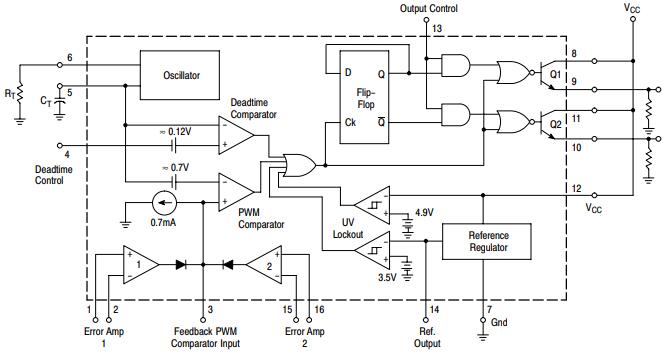 |  | 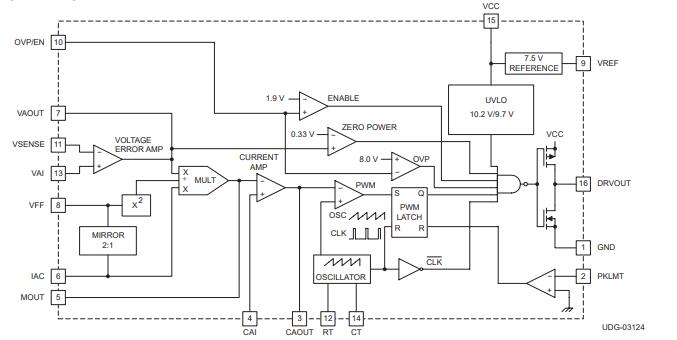 |  |
Applications of SG3524N
Desktop PCs
Microwave Ovens
Server PSUs
Solar Micro-Inverters
Washing Machines: Low-End and High-End
E-Bikes
Power: Telecom/Server AC/DC Supplies:
Smoke Detectors
Solar Power Inverters
SG3524N Package informtion
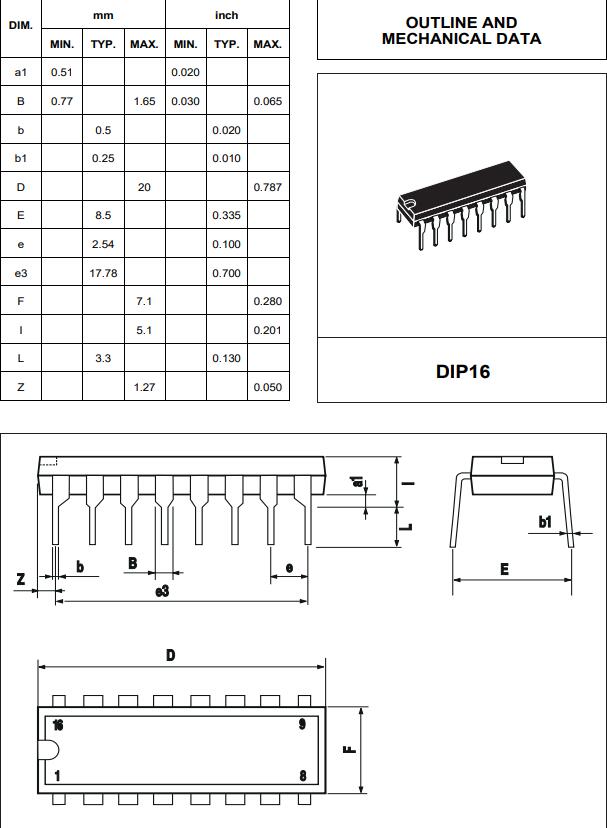
SG3524N Package informtion
SG3524N Manufacturer
STMicroelectronics is a global independent semiconductor company and is a leader in developing and delivering semiconductor solutions across the spectrum of microelectronics applications. An unrivaled combination of silicon and system expertise, manufacturing strength, Intellectual Property (IP) portfolio, and strategic partners positions the Company at the forefront of System-on-Chip (SoC) technology, and its products play a key role in enabling today's convergence trends.
Datasheet PDF
- Datasheets :
Popularity by Region
Parts with Similar Specs
- ImagePart NumberManufacturerPackage / CaseNumber of PinsNumber of OutputsMoisture Sensitivity Level (MSL)Terminal PositionControl TechniqueNumber of TerminationsView Compare
SG3524N
16-DIP (0.300, 7.62mm)
16
2
1 (Unlimited)
DUAL
PULSE WIDTH MODULATION
16
16-DIP (0.300, 7.62mm)
16
2
1 (Unlimited)
DUAL
PULSE WIDTH MODULATION
16
16-DIP (0.300, 7.62mm)
16
2
1 (Unlimited)
DUAL
PULSE WIDTH MODULATION
16
16-DIP (0.300, 7.62mm)
16
-
1 (Unlimited)
DUAL
PULSE WIDTH MODULATION
16
16-DIP (0.300, 7.62mm)
16
2
1 (Unlimited)
DUAL
PULSE WIDTH MODULATION
16
How many pins of SG3524N ?
16 pins.
What’s the operating temperature of SG3524N?
0°C~70°C TA.
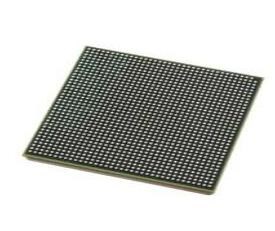 P5010 vs. P5020: What is the Difference
P5010 vs. P5020: What is the Difference23 July 2021289
 LM3915 Dot/Bar Display Driver: Circuit, Price and Application
LM3915 Dot/Bar Display Driver: Circuit, Price and Application29 July 20214742
 AT89S8253 Microcontroller: Pinout, Equivalent and Datasheet
AT89S8253 Microcontroller: Pinout, Equivalent and Datasheet25 February 20222844
 Texas Instruments MSP430F1101IPW Microcontroller Datasheet Overview
Texas Instruments MSP430F1101IPW Microcontroller Datasheet Overview28 February 2024167
 LM7915 Regulator IC: Equivalent, Schematic and Datasheet
LM7915 Regulator IC: Equivalent, Schematic and Datasheet14 September 20216351
 MP1584EN Step-Down Converter: Datasheet, Pinout and Circuit
MP1584EN Step-Down Converter: Datasheet, Pinout and Circuit16 April 202517321
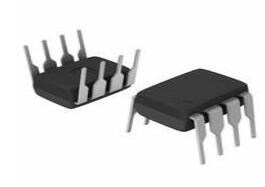 IR2104 Half-Bridge Driver:Datasheet, Schematic, Pinout
IR2104 Half-Bridge Driver:Datasheet, Schematic, Pinout14 October 202113094
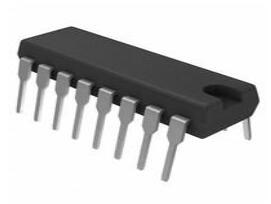 SN754410NEE4 Half-H Driver:Alternatives, Pinout, Schematic
SN754410NEE4 Half-H Driver:Alternatives, Pinout, Schematic09 September 20211601
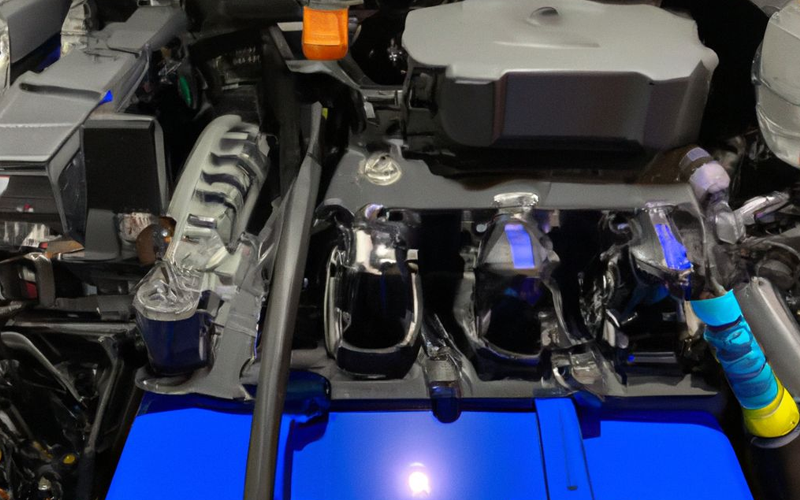 Hybrid Sources Powered Electric Vehicles - Part 1
Hybrid Sources Powered Electric Vehicles - Part 108 March 20231744
 What is OLED?
What is OLED?16 March 20215387
 Modeling Wide Band-Gap Semiconductors for Enhanced Performance
Modeling Wide Band-Gap Semiconductors for Enhanced Performance31 January 20243154
 Ceramic Capacitors vs Film Capacitors: A Comprehensive Comparison Guide
Ceramic Capacitors vs Film Capacitors: A Comprehensive Comparison Guide14 May 20252384
 The Era of Business Globalization: Chinese Founders Aim to Conquer the World
The Era of Business Globalization: Chinese Founders Aim to Conquer the World30 May 20225444
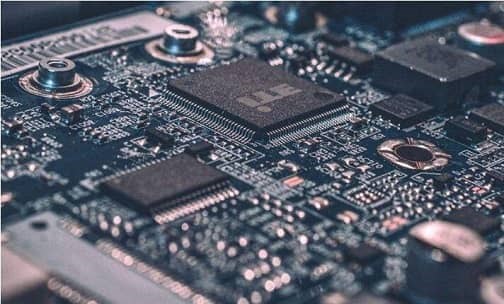 Battery Charger IC Guide
Battery Charger IC Guide16 February 202210290
 Addressing Vulnerabilities in the U.S. Semiconductor Market
Addressing Vulnerabilities in the U.S. Semiconductor Market27 October 2023462
 Selection and Optimization of Peripheral Components for DC-DC Boost Regulator
Selection and Optimization of Peripheral Components for DC-DC Boost Regulator15 April 20221772
STMicroelectronics
In Stock: 894
United States
China
Canada
Japan
Russia
Germany
United Kingdom
Singapore
Italy
Hong Kong(China)
Taiwan(China)
France
Korea
Mexico
Netherlands
Malaysia
Austria
Spain
Switzerland
Poland
Thailand
Vietnam
India
United Arab Emirates
Afghanistan
Åland Islands
Albania
Algeria
American Samoa
Andorra
Angola
Anguilla
Antigua & Barbuda
Argentina
Armenia
Aruba
Australia
Azerbaijan
Bahamas
Bahrain
Bangladesh
Barbados
Belarus
Belgium
Belize
Benin
Bermuda
Bhutan
Bolivia
Bonaire, Sint Eustatius and Saba
Bosnia & Herzegovina
Botswana
Brazil
British Indian Ocean Territory
British Virgin Islands
Brunei
Bulgaria
Burkina Faso
Burundi
Cabo Verde
Cambodia
Cameroon
Cayman Islands
Central African Republic
Chad
Chile
Christmas Island
Cocos (Keeling) Islands
Colombia
Comoros
Congo
Congo (DRC)
Cook Islands
Costa Rica
Côte d’Ivoire
Croatia
Cuba
Curaçao
Cyprus
Czechia
Denmark
Djibouti
Dominica
Dominican Republic
Ecuador
Egypt
El Salvador
Equatorial Guinea
Eritrea
Estonia
Eswatini
Ethiopia
Falkland Islands
Faroe Islands
Fiji
Finland
French Guiana
French Polynesia
Gabon
Gambia
Georgia
Ghana
Gibraltar
Greece
Greenland
Grenada
Guadeloupe
Guam
Guatemala
Guernsey
Guinea
Guinea-Bissau
Guyana
Haiti
Honduras
Hungary
Iceland
Indonesia
Iran
Iraq
Ireland
Isle of Man
Israel
Jamaica
Jersey
Jordan
Kazakhstan
Kenya
Kiribati
Kosovo
Kuwait
Kyrgyzstan
Laos
Latvia
Lebanon
Lesotho
Liberia
Libya
Liechtenstein
Lithuania
Luxembourg
Macao(China)
Madagascar
Malawi
Maldives
Mali
Malta
Marshall Islands
Martinique
Mauritania
Mauritius
Mayotte
Micronesia
Moldova
Monaco
Mongolia
Montenegro
Montserrat
Morocco
Mozambique
Myanmar
Namibia
Nauru
Nepal
New Caledonia
New Zealand
Nicaragua
Niger
Nigeria
Niue
Norfolk Island
North Korea
North Macedonia
Northern Mariana Islands
Norway
Oman
Pakistan
Palau
Palestinian Authority
Panama
Papua New Guinea
Paraguay
Peru
Philippines
Pitcairn Islands
Portugal
Puerto Rico
Qatar
Réunion
Romania
Rwanda
Samoa
San Marino
São Tomé & Príncipe
Saudi Arabia
Senegal
Serbia
Seychelles
Sierra Leone
Sint Maarten
Slovakia
Slovenia
Solomon Islands
Somalia
South Africa
South Sudan
Sri Lanka
St Helena, Ascension, Tristan da Cunha
St. Barthélemy
St. Kitts & Nevis
St. Lucia
St. Martin
St. Pierre & Miquelon
St. Vincent & Grenadines
Sudan
Suriname
Svalbard & Jan Mayen
Sweden
Syria
Tajikistan
Tanzania
Timor-Leste
Togo
Tokelau
Tonga
Trinidad & Tobago
Tunisia
Turkey
Turkmenistan
Turks & Caicos Islands
Tuvalu
U.S. Outlying Islands
U.S. Virgin Islands
Uganda
Ukraine
Uruguay
Uzbekistan
Vanuatu
Vatican City
Venezuela
Wallis & Futuna
Yemen
Zambia
Zimbabwe







